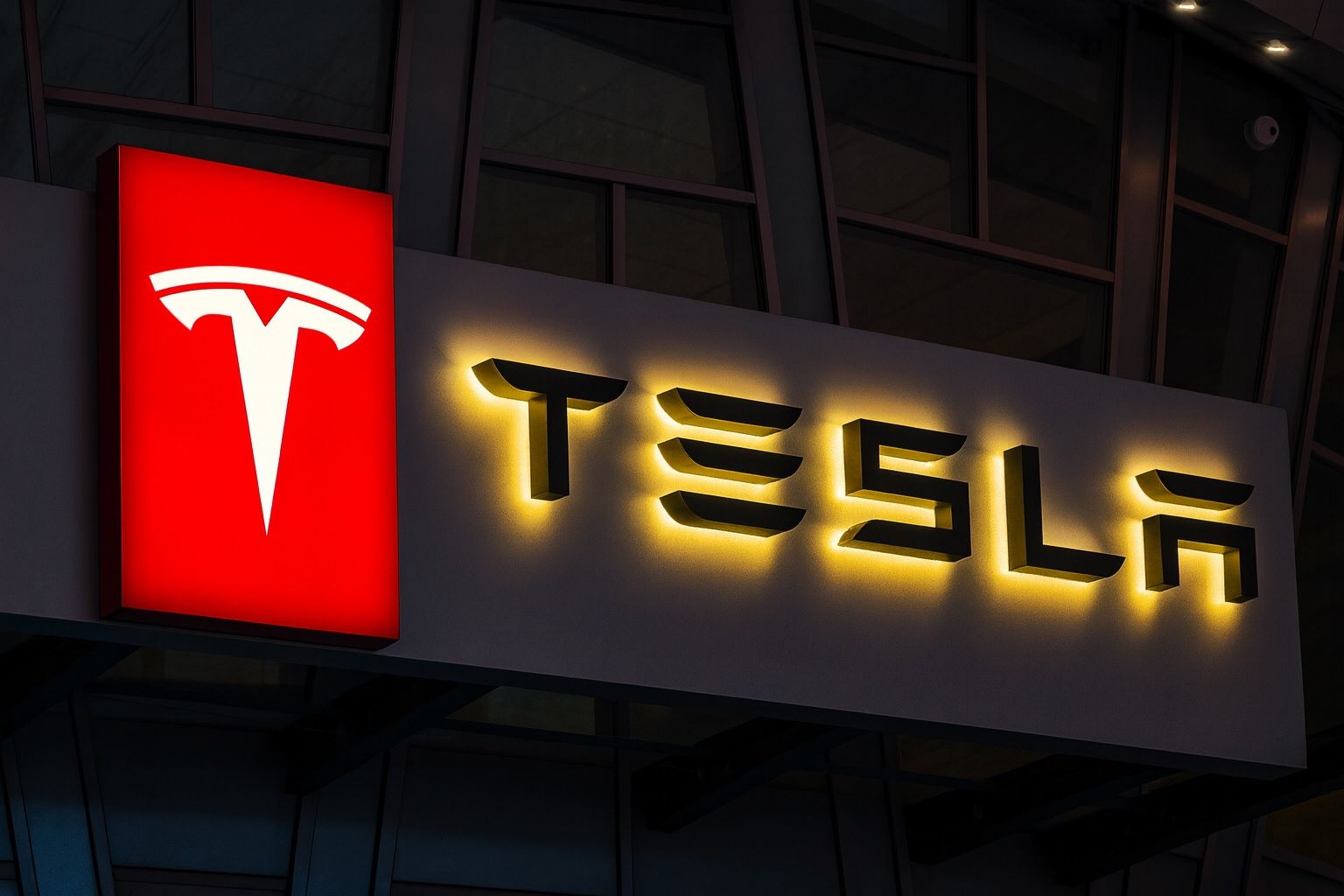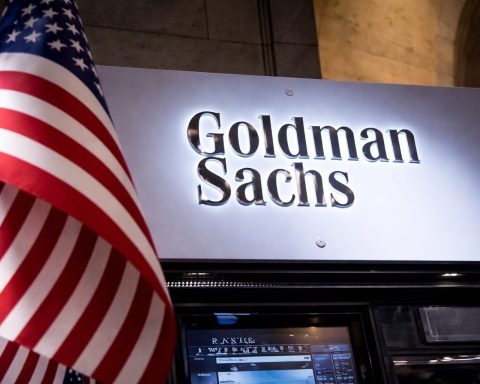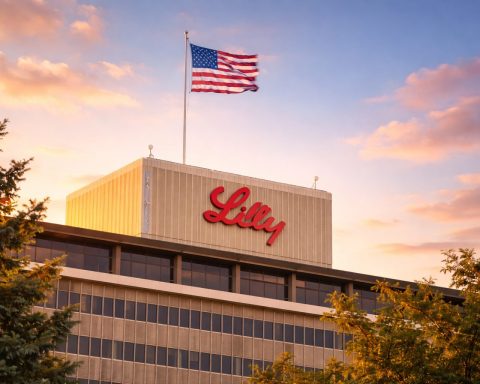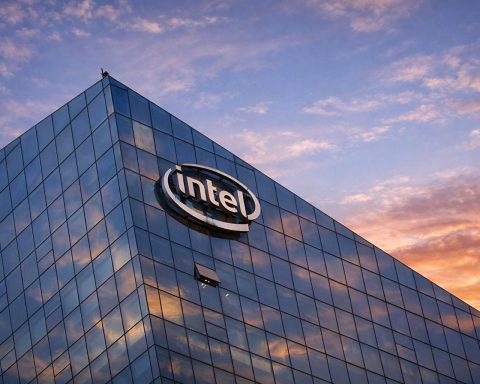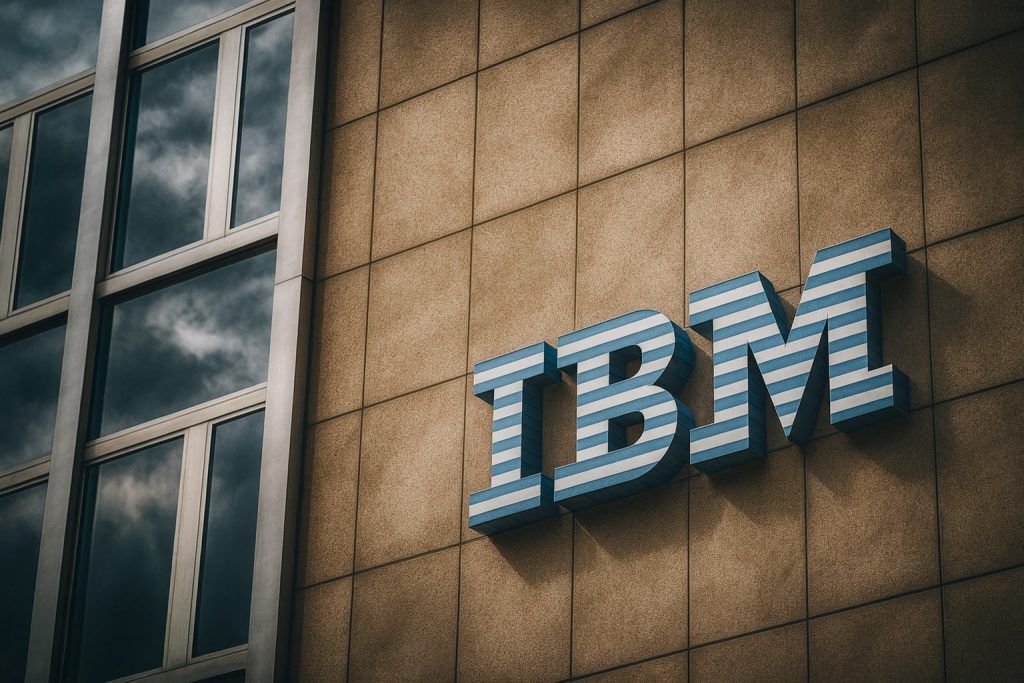- Stock Performance: Tesla (TSLA) shares are trading near all-time highs – in the mid-$440s as of late Oct. 2025 – up roughly 80% year-to-date (vastly outperforming the S&P 500) [1].
- Record Deliveries: In Q3 2025 Tesla delivered 497,099 vehicles, a new quarterly record (+7.4% YoY) that comfortably beat analyst forecasts [2] [3]. (U.S. sales surged in September as buyers rushed to claim the expiring $7,500 EV tax credit.)
- Financials: Q3 revenue hit a record ~$28.1 billion (vs. ~$26.3B forecast), but higher costs and steep price cuts squeezed profits. Adjusted EPS was about $0.50 (GAAP ~$0.39), missing the ~$0.54 Street estimate [4]. Operating income fell ~40% YoY, reflecting the margin squeeze [5].
- New Models: On Oct. 7 Tesla unveiled lower-cost “Standard Range” versions of its Model Y and Model 3 (starting about $36,990–$39,990). These trims trade some features (smaller battery, no Autosteer, etc.) for roughly $4–5K lower prices [6] [7]. The modest discounts disappointed many investors – TSLA stock fell ~4–4.5% after the announcement [8] [9].
- Musk Pay Plan: Shareholders will vote soon on Elon Musk’s proposed $1 trillion compensation plan (tying pay to an $8.5 trillion market cap target by 2035). Proxy adviser ISS has urged investors to reject the deal as excessive [10] [11].
- Analyst Outlook: Wall Street is split. Bullish analysts (e.g. Wedbush’s Dan Ives) argue Tesla’s cutting-edge autonomous/AI potential justifies very high valuations – Ives maintains a ~$600 price target, calling Tesla’s autonomy a “$1 trillion” opportunity [12]. Some even dream of $900/share prices. By contrast, skeptics (like BNP Paribas) see TSLA’s ~$1.4T market cap as too rich, assigning targets as low as ~$307. The average 12-month target is only ~$360, implying 10–20% downside [13] [14].
- EV Market Trends: Electric vehicle sales are surging globally. In September 2025, EV (battery + plug-in hybrid) sales jumped 26% YoY to a record 2.1 million cars, led by China and a U.S. tax-credit rush [15]. However, analysts warn of a pullback now that the federal credit has expired – U.S. EV demand is “expected to drop sharply” in Q4 without subsidies [16]. Competition is intensifying worldwide (Chinese leader BYD is outselling Tesla in parts of Europe, and dozens of new EV models have arrived) [17] [18].
Stock Performance & Market Context
Tesla’s stock has been on a tear in October, but also volatile. It hit an intraday high near $453 on Oct. 6 (a 52-week peak) [19], then oscillated with market swings. By Oct. 21 TSLA closed around $442.60 [20]. The stock jumped about 5% on Oct. 13 amid a broad tech rally, then eased 1–2% the next day as concerns over U.S.–China trade flared (Tesla is sensitive to China demand and tariffs) [21]. Year-to-date TSLA is up roughly 80%, far outpacing the S&P 500’s ~17% gain [22] [23]. This strength reflects excitement over Tesla’s growth initiatives (from Gigafactories to self-driving AI), but also means much is priced in. Notably, Tesla’s forward P/E is roughly 250× [24], a steep valuation that some experts view as overly optimistic if execution falters.
On Oct. 22 (amid mixed earnings from tech peers), U.S. markets closed lower (Dow –0.7%, S&P 500 –0.5%, Nasdaq –0.9%) [25]. TSLA’s report came after the close; it initially held up on the headline of record sales. But after-hours on Oct. 22 TSLA shares slid ~2% as investors digested the earnings miss [26]. Early trading on Oct. 23 saw further weakness: Tesla shares fell nearly 4% in European trading following the profit miss [27]. By comparison, broad market futures were mixed after losses the day before.
Q3 Deliveries and Financial Results
Tesla’s Q3 production and deliveries were spectacular. On Oct. 2 the company announced 447,450 produced and 497,099 delivered vehicles in Q3 – both all-time quarterly highs [28]. (Energy storage deployments also hit a record 12.5 GWh.) Management attributed the sales surge largely to U.S. buyers rushing to beat the expiring tax credit, aided by temporary discounts and financing deals. The result was roughly a 12% surprise above consensus delivery forecasts [29].
This sales strength lifted Tesla’s revenue, but profit margins were squeezed. Q3 auto revenue was about $21.2B, the highest in over a year [30]. Total GAAP revenue (including energy and services) reached ~$28.1B [31], topping the ~$26.3B consensus. However, deep price cuts, higher input costs and one-time charges took a toll. Tesla reported $0.50 adjusted EPS (GAAP $0.39), below the $0.54 analyst estimate [32]. Automotive gross margin slipped to roughly 23% (well under its long-term norms). Operating income fell about 40% YoY [33].
Management warned that the quarter’s profit beat was deceptive. CEO Elon Musk noted the huge delivery spike owed to “pull-forward” tax-credit demand, and cautioned investors not to expect it to repeat. He told analysts “a few rough quarters” are likely now that subsidies have ended [34]. Indeed, the drop in regulatory-credit revenue and new U.S. tariffs (about a $300–400M hit this quarter) further offset higher sales [35].
New Models and Pricing Moves
In early October Tesla unveiled its more affordable variants of the Model 3 sedan and Model Y crossover. The new “Standard Range” trims start at $36,990 (Model 3) and $39,990 (Model Y), about $4–5K below the prior base prices [36] [37]. To cut costs, Tesla pared back features: these cars use smaller batteries, manually-adjusted mirrors, and drop Autosteer, rear-seat heaters and other amenities [38] [39].
The market reaction was lukewarm. Tesla’s stock initially popped 2% on the news of a cheaper car [40], but then erased the gains. It ultimately fell about 4–4.5% on Oct. 7–8 as analysts and investors voiced disappointment that the price cuts weren’t larger [41] [42]. Wedbush’s Dan Ives said he was “surprised and disappointed” that the Standard models were only ~$5K cheaper than the Premium trims [43]. Research firm Futurum Equities quipped that the move was “basically a pricing lever, not much of a product catalyst” and unlikely to unlock new demand at scale [44].
Looking ahead, Tesla intends to ramp up these lower-cost models (initially produced in limited volume) through 2026. CEO Musk has repeatedly said a <$30K mass-market EV is key to long-term growth. The October launch shows Tesla edging toward that goal, but as one analyst put it, “I just don’t know that this is enough” to counter cheaper Chinese rivals and address broad customer demand [45].
Executive Pay Package and Governance
Tesla’s corporate governance has been in the spotlight alongside its results. Investors are deciding whether to approve Elon Musk’s massive new compensation plan, which would pay him up to $1 trillion if Tesla’s market cap grows 10× over the next decade. On Oct. 17, proxy adviser Institutional Shareholder Services (ISS) urged shareholders to reject the proposal as “excessive” [46]. The plan hinges on Tesla hitting an $8.5 trillion valuation (roughly 5–6× the current market cap) – a target many view as unrealistic given current fundamentals. Musk and Tesla have mounted a lobbying effort to defend the deal, but even some of Musk’s allies are questioning whether future gains justify the cost [47] [48].
Investor sentiment on governance is mixed. On one hand, Musk’s bold vision keeps enthusiasm high; on the other, some see risks in his political entanglements and strategic pivots. For example, Morningstar analyst Dave Sekera observes that “the market is really pricing Tesla more as an AI stock than as an operating company,” meaning investors are banking on future tech breakthroughs (Autonomy, Robotaxis, Optimus robots) rather than current auto profits [49].
Analyst Commentary and Forecasts
Mixed Views: Analysts’ price targets for TSLA are all over the map. Bullish firms highlight Tesla’s aggressive expansion into AI-driven mobility. Wedbush’s Dan Ives reiterated a $600 target post-earnings, arguing Tesla’s autonomous platform could be worth “$1 trillion” on its own [50]. Cantor Fitzgerald’s Andres Sheppard cites the pending robotaxi network, the new low-cost models, and the Optimus humanoid bot as potential catalysts [51]. In his view, these developments could justify Tesla’s sky-high valuation if they succeed.
Bearish analysts counter that most of this upside is already priced in. BNP Paribas began coverage at Underperform with a $307 target, warning that Tesla’s $1+ trillion market cap already embeds an “overly optimistic robotaxi story” [52]. Goldman Sachs and Barclays have cautioned that tax-credit expirations and dwindling regulatory-credit sales have “increasingly disconnected” the stock from its underlying auto business [53]. Morgan Stanley’s Adam Jonas maintains an Overweight rating, but with a more modest ~$410 target [54].
In practice, this means analysts see a wide range of outcomes. The average 12-month target for TSLA is only about $364 [55], suggesting roughly 10–20% downside from current levels. (About half of analysts cover TSLA as a Hold or Sell, according to Refinitiv data.) As one observer noted, traders are “on edge” – Tesla’s stock is up nearly 100% from last year’s lows, but only slightly higher year-to-date, so any guidance misstep could trigger a pullback [56].
Short-term Outlook: The immediate focus is on Q4 delivery guidance and profitability. Many analysts believe the record Q3 sales will likely normalize. Ken Mahoney (Mahoney Asset Mgmt.) warned that the $7,500 U.S. credit “definitely…pulled forward demand,” implying a gap in Q4 unless something new comes along [57]. With U.S. incentives gone and competitors slashing prices, some expect a “soft couple of quarters” ahead [58]. That said, any signs of sustained demand or margin stabilization could spark another rally, given Tesla’s long-term growth narrative.
Long-term Outlook: Tesla’s vision is expanding beyond cars. If Musk’s bets on AI, autonomy and robotics pay off, the company could revalue yet again. Some analysts treat TSLA as an “AI/robotics” play, assuming breakthroughs in Full Self-Driving and next-gen chips will eventually monetize Tesla’s ~$100 billion R&D investment [59]. RBC Capital Markets, for instance, raised its price target to $500 by emphasizing Tesla’s potential in software and AI [60]. On the flip side, if Tesla fails to deliver on autonomous driving or if competitors (like Apple, Baidu or legacy automakers) overtake in EVs, the stock could suffer.
EV Market Trends and Competition
Tesla no longer faces an easy path. The broader EV market continues to grow rapidly, but so does competition. As Reuters notes, Tesla’s updated Model Y was the best-selling car in Denmark this fall, but even so, Tesla’s overall European sales fell 42.9% year-to-date through August while EU EV sales jumped 24.8% [61]. In fact, Chinese EV leader BYD recently outsold Tesla in the EU in August (the second time this year), highlighting how new entrants are chipping away at Tesla’s market share [62]. “Tesla may still be a big fish, but the pond is now full of serious competitors,” observes Andy Palmer of Electric Vehicles UK [63].
In the U.S., Tesla’s aging lineup faces fresh rivalry from legacy automakers. GM’s Chevy Equinox EV, Ford’s Electric F-150, VW’s ID.4 and other models now offer alternatives in Tesla’s segments. Many companies are responding to falling demand by cutting prices or boosting dealer incentives (as Rho Motion data shows, GM and Hyundai are discounting heavily) [64]. Meanwhile, investment in EV charging and infrastructure is accelerating (North America is adding ultra-fast chargers, and more automakers are switching to Tesla’s NACS standard), which in the long run benefits EV adoption but also lowers Tesla’s network advantage.
Globally, the IEA reports that electric cars could top 25% of all vehicle sales by 2025. The industry is moving fast – in September, China (the world’s largest car market) accounted for ~60% of global EV sales [65]. Tesla competes there with local giants like BYD and NIO. Any slowdown in government subsidies or incentives can lead to cyclical dips (as many analysts expect this winter). But structurally, governments and companies remain committed to EVs, so Tesla’s market is only getting bigger – even if Tesla itself may capture a smaller slice.
Conclusion and Outlook
Tesla’s late October share price reflects both euphoria and caution. The stock has rallied on the promise of record deliveries and bold innovation, but the Q3 earnings also laid bare the challenges: margin pressure, saturated markets, and lofty expectations. As analyst Kunal Purohit at Capital Group puts it, Tesla’s latest results “cemented its status as an EV and tech leader, but also underscored new challenges” [66].
Looking ahead, investors will watch several key questions: Can Q4 deliveries hold up without the tax credit boost? Will Tesla’s price cuts generate enough volume to offset thinner margins? How quickly can Tesla ramp new products (the Cybertruck ramp, the rumored sub-$30K Model 2, its robotaxi fleet) to reignite growth? Meanwhile, any signal of slowing demand in China or Europe could spook the stock in the near term.
In the short term, analysts expect heightened volatility. Options markets suggest swings of ±~7% around earnings, and indeed Tesla has seen 5% moves in a day this month [67]. Over the long run, the stock’s fate may hinge on those big bets – self-driving, AI chips, robots – playing out. “If Tesla’s next-gen AI and autonomy plans really click,” says Wedbush’s Ives, “then we’re looking at a $1 trillion-ish opportunity” [68]. But if not, Tesla could fall back to earth with its peers.
For now, Tesla remains a standout in a frothy tech market – about double its level a year ago [69] – yet far from a sure thing. Investors should be aware that at ~250× forward earnings, Tesla’s stock price fully discounts a vision of the future. As Morningstar’s Sekera warns, that vision is not guaranteed: the stock today is as much a bet on tomorrow’s breakthroughs as it is a reflection of today’s car business [70].
Sources: Recent news and analysis from Tesla’s Q3 earnings release and conference call [71] [72]; Tesla’s own production report [73]; reports by Reuters [74] [75] [76] [77]; and market research outlets. (TechStock²’s TSLA coverage provided detailed data and expert quotes [78] [79].)
References
1. ts2.tech, 2. ts2.tech, 3. www.businesswire.com, 4. ts2.tech, 5. ts2.tech, 6. ts2.tech, 7. www.reuters.com, 8. ts2.tech, 9. www.reuters.com, 10. ts2.tech, 11. ts2.tech, 12. ts2.tech, 13. ts2.tech, 14. ts2.tech, 15. www.reuters.com, 16. www.reuters.com, 17. www.reuters.com, 18. www.reuters.com, 19. ts2.tech, 20. ts2.tech, 21. ts2.tech, 22. ts2.tech, 23. ts2.tech, 24. ts2.tech, 25. www.reuters.com, 26. ts2.tech, 27. www.reuters.com, 28. www.businesswire.com, 29. ts2.tech, 30. techcrunch.com, 31. ts2.tech, 32. ts2.tech, 33. ts2.tech, 34. ts2.tech, 35. techcrunch.com, 36. ts2.tech, 37. www.reuters.com, 38. www.reuters.com, 39. www.reuters.com, 40. energynews.pro, 41. ts2.tech, 42. www.reuters.com, 43. www.reuters.com, 44. www.reuters.com, 45. www.reuters.com, 46. ts2.tech, 47. ts2.tech, 48. techcrunch.com, 49. ts2.tech, 50. ts2.tech, 51. ts2.tech, 52. ts2.tech, 53. ts2.tech, 54. ts2.tech, 55. ts2.tech, 56. ts2.tech, 57. ts2.tech, 58. ts2.tech, 59. ts2.tech, 60. ts2.tech, 61. www.reuters.com, 62. www.reuters.com, 63. www.reuters.com, 64. www.reuters.com, 65. www.reuters.com, 66. ts2.tech, 67. ts2.tech, 68. ts2.tech, 69. ts2.tech, 70. ts2.tech, 71. ts2.tech, 72. www.businesswire.com, 73. www.businesswire.com, 74. www.reuters.com, 75. www.reuters.com, 76. www.reuters.com, 77. www.reuters.com, 78. ts2.tech, 79. ts2.tech
